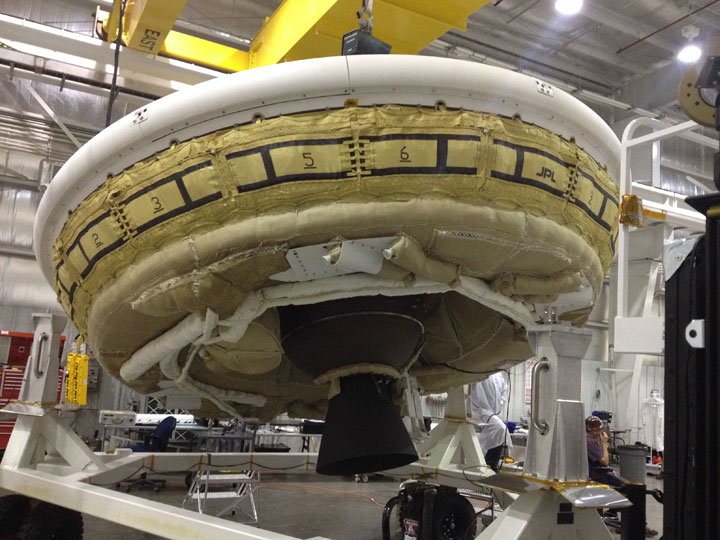TORONTO – People in Hawaii might think they’re seeing a UFO on Tuesday, but they needn’t worry: it’s just NASA.

The space agency is scheduled to conduct its first test flight of its Low Density Supersonic Decelerator (LDSD) from the Pacific Missile Range Facility in Kauai, Hawaii. The LDSD is an innovative way of landing heavy payloads on Mars and other solar system bodies.
READ MORE: NASA’s new Martian braking system paving way to easier human colonization
With plans to land bigger robotic missions on the red planet, as well as paving the road to human explorers, future spacecraft will inevitably have much heavier payloads than those of today. The current parachute system that slows these payloads down in order to safely land them on the planet, have a limit of about one tonne. The LDSD will increase that to close to 15 tonnes.
But in order to test the spacecraft, it needs to be in a thin atmosphere like that of Mars. That’s where these test flights come in.
The spacecraft will rise to the Earth’s stratosphere, which is similar to the thin atmosphere of Mars.
“We use a helium balloon — that, when fully inflated, would fit snugly into Pasadena’s Rose Bowl — to lift our vehicle to 120,000 feet,” Mark Adler, project manager for the Low Density Supersonic Decelerator at NASA’s Jet Propulsion Laboratory (JPL) in Pasadena, California says. “From there we drop it for about one and a half seconds. After that, it’s all about going higher and faster — and then it’s about putting on the brakes.”
The helium balloon is enormous: about 34 million cubic feet. You could fit a professional football stadium in it.
After it’s dropped, and once it reaches a supersonic speed of Mach 4, it will deploy an inflatable Kevlar tube around itself called the Supersonic Inflatable Aerodynamic Decelerator (SIAD), and finally a massive parachute.
There are several potential test dates for the LDSD. Tuesday’s window extends from 2 p.m. to 3:30 p.m. EDT.
You can watch the test live on NASA TV.


Comments